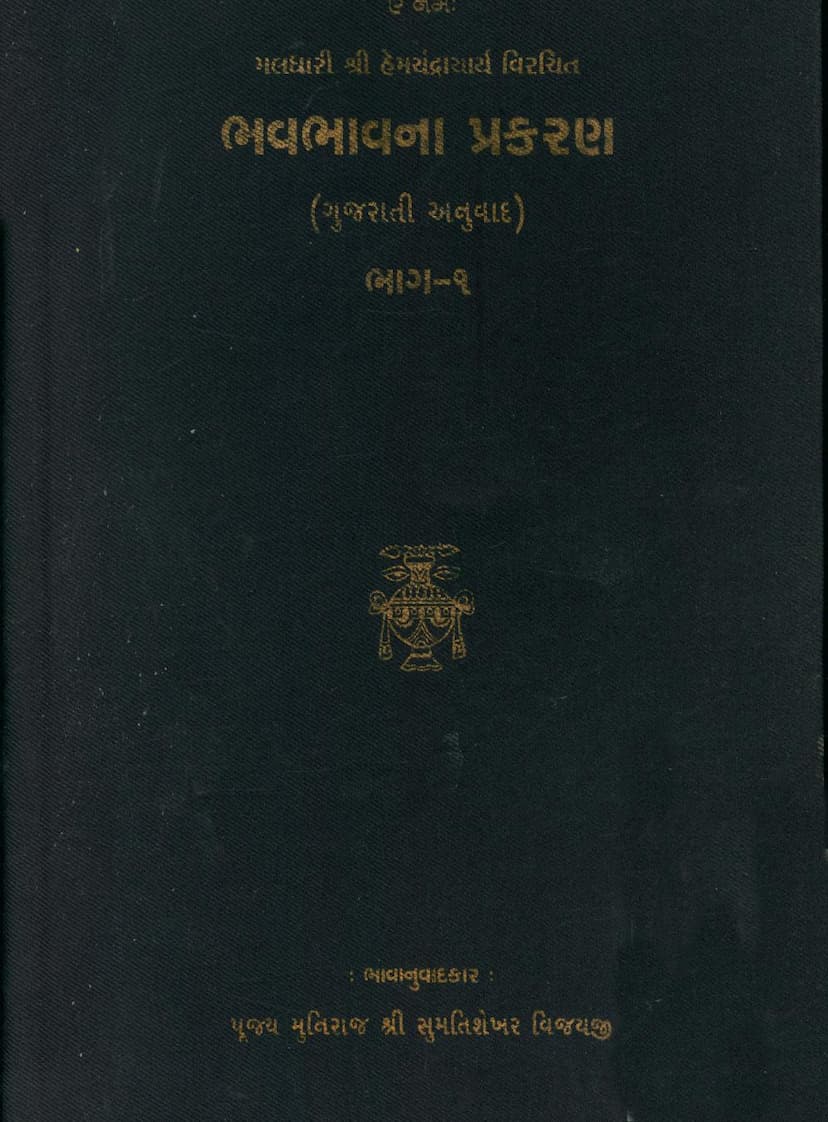Bhavbhavna Prakaran Part 01
Added to library: September 1, 2025

Summary
Here's a comprehensive summary of "Bhav Bhavna Prakaran Part 01" by Sumtishekharvijay, based on the provided text:
Book Title: Bhav Bhavna Prakaran Part 01 Author: Sumtishekharvijay (based on the work of Acharya Hemchandrasuri) Publisher: Arihant Aradhak Trust Catalog Link: https://jainqq.org/explore/005721/1
This volume is the first part of the Gujarati translation of the "Bhav Bhavna Prakaran" (also known as Bhav Bhavna), originally composed by the renowned Jain scholar Acharya Hemchandrasuri. The translation and commentary are by Muni Shri Sumtishekhar Vijayji.
Core Theme and Purpose:
The "Bhav Bhavna Prakaran" is fundamentally a treatise on the reflection and contemplation of the cycle of birth and death (Samsara). Its primary aim is to elucidate the transient and suffering-filled nature of worldly existence in its various forms to inspire detachment and guide individuals towards spiritual liberation (Moksha). The text emphasizes that true happiness and lasting peace can only be achieved by conquering Raga (attachment) and Dwesha (aversion), which are identified as the root causes of karmic bondage and suffering across the four realms of existence.
Key Concepts and Teachings:
- The Nature of Samsara: The book vividly portrays the relentless cycle of births and deaths across various life forms and realms, highlighting the inherent suffering and impermanence (Anitya) of all worldly phenomena. It uses compelling narratives and examples to illustrate how attachment to physical objects, relationships, and even one's own body leads to pain.
- The Power of Bhavnas (Meditations/Reflections): The text underscores the importance of cultivating twelve types of Bhavnas (meditations or reflections) as a means to overcome attachment and cultivate equanimity (Samata). These Bhavnas are presented as the key to achieving spiritual progress and ultimately liberation.
- The Twelve Bhavnas: The book introduces and discusses the twelve Bhavnas, though it specifically mentions that while eleven are described concisely, the "Samsara Bhavna" is elaborated upon extensively, giving the book its title. The Bhavnas are listed as:
- Anitya (Impermanence)
- Asharan (Lack of Refuge)
- Ekatva (Solitude/Oneness)
- Anyatva (Otherness/Separation)
- Samsara (The Cycle of Existence)
- Ashuchi (Impurity)
- Lokaswaroop (The True Nature of the World)
- Aasrava (Influx of Karmas)
- Samvara (Cessation of Karmas)
- Nirjara (Shedding of Karmas)
- Uttamguna (Supreme Virtues)
- Bodhi Durlabha (Rarity of Enlightenment/True Knowledge)
- The Superiority of Dharma (Spiritual Path): The text strongly advocates for the path of Dharma, particularly Bhava Dharma (spiritual disposition/inner practice), over material gain (Artha) and worldly pleasures (Kama). It argues that focusing on material pursuits is ultimately detrimental and leads to further suffering, akin to throwing fuel on a burning fire.
- The Role of a Guru: The importance of a spiritual guide (Guru) is highlighted, as they provide the knowledge and direction necessary to understand the true nature of reality and follow the path of Dharma.
- The Example of Lord Neminath: A significant portion of the text is dedicated to recounting the life stories and past lives of Lord Neminath and his consort Rajimati. These narratives serve as profound illustrations of the Bhavnas, showcasing the consequences of attachment and the path to detachment and liberation across numerous lifetimes. The detailed accounts of their various births, including divine and human existences, emphasize the karmic consequences of actions and the eventual spiritual awakening.
- Equanimity and Inner Peace: The teachings emphasize that by cultivating these Bhavnas, one can develop equanimity (Samata), which is likened to a compass in a ship, keeping the soul stable amidst the ups and downs of life. This state of equanimity prevents one from being swayed by worldly happiness or sorrow.
- Analogy of the Umbrella: The Bhavnas are compared to an umbrella that protects the soul from the rain of favorable and unfavorable karmas. Just as an umbrella prevents one from getting wet in the rain, the practice of Bhavnas prevents one from being overwhelmed by ego (in favorable situations) or despair (in unfavorable situations).
- The Nature of True Wealth: The book equates Samata (equanimity) with true wealth and true happiness, stressing that constant contemplation of the Bhavnas is essential to attain this state.
Translation and Commentary:
Muni Shri Sumtishekhar Vijayji is praised for his meticulous translation and commentary, making the profound Sanskrit and Prakrit teachings of Acharya Hemchandrasuri accessible to the Gujarati-speaking audience. The text also acknowledges the contributions of the supporting trusts and individuals who made the publication possible.
Overall Message:
"Bhav Bhavna Prakaran Part 01" serves as a profound spiritual guide, urging readers to reflect on the impermanence of worldly life and the ultimate futility of material pursuits. By internalizing the twelve Bhavnas and following the principles of Jain Dharma, individuals can overcome attachment and aversion, achieve inner peace, and progress on the path to ultimate salvation. The detailed narratives, especially those related to Neminath's past lives, are designed to be instructive and inspiring, demonstrating the practical application of these spiritual principles.